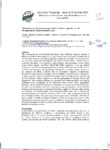Please use this identifier to cite or link to this item:
http://www.alice.cnptia.embrapa.br/alice/handle/doc/404101Full metadata record
| DC Field | Value | Language |
|---|---|---|
| dc.contributor.author | DENICH, M. | pt_BR |
| dc.contributor.author | VIELHAUER, K. | pt_BR |
| dc.contributor.author | SÁ, T. D. A. | pt_BR |
| dc.contributor.author | LÜCKE, W. | pt_BR |
| dc.contributor.author | VLEK, P. L. G. | pt_BR |
| dc.date.accessioned | 2014-09-19T07:20:03Z | - |
| dc.date.available | 2014-09-19T07:20:03Z | - |
| dc.date.created | 2003-09-15 | pt_BR |
| dc.date.issued | 2001 | pt_BR |
| dc.identifier.citation | In: CONFERENCE ON INTERNATIONAL AGRICULTURAL RESEARCH FOR DEVELOPMENT, 2001, Bonn. Deustscher tropentag 2001: proceeding. Bonn: University of Bonn, 2001. | pt_BR |
| dc.identifier.uri | http://www.alice.cnptia.embrapa.br/alice/handle/doc/404101 | pt_BR |
| dc.description | The introduction of research-based innovations into traditional land-use systems is difficult, as examples from agroforestry have ShOWD.It can take years to decades until a new agricultural practice has been adopted by the farmers and often the innovations are not very well aligned with the problems and concems of the farmers. Therefore, in our search for altematives to the traditional slash-and-bum land preparation (in the context of the SHIFT project "Secondary forests and fallow vegetation in the agricultural landscape ofthe Eastern Amazon region") we opted for field experiments carried out on small-farmers' land in an old agricultural landscape of the Amazon region. To achieve our objective we follow a phased plan: (i) exploratory research (ii) technology development and prototype evaluation and (iii) adoption-oriented research. During the exploratory project phase we identified the critical needs for improvement, focusing on nutrient dynamics, fallow regeneration, and the replacement of buming during land preparation. Then, instead of designing a completely new land-use system, we aimed at modifying those components of the traditional system which cause degradation processes due to intensified land use or introducing new components which have the potential to prevent these. Alternative technologies were developed as a set of modules including the development of a tractor-driven bush chopper for fire-free land clearing and mulching, enrichment planting with fast-growing leguminous trees to improve the biomass production of the fallow vegetation, shifts in the cropping sequence as well as the screening of modem low-input crop varieties under mulch conditions. Adoption of these modules is flexible, leaving the farmer in control of the innovation processo The adoption-oriented research phase is currently underway and assesses the willingness of the farmers to adopt the farming system improvements. Participatory on-farm research facilitates the adoption processo | pt_BR |
| dc.language.iso | eng | eng |
| dc.rights | openAccess | eng |
| dc.subject | Adoção de inovação | pt_BR |
| dc.subject | Região Bragantina | pt_BR |
| dc.subject | Pará | pt_BR |
| dc.subject | Brasil | pt_BR |
| dc.title | Alternatives to slash-and-burn agriculture: a research approach for the development of a chop-and-mulch system. | pt_BR |
| dc.type | Artigo em anais e proceedings | pt_BR |
| dc.date.updated | 2014-09-19T07:20:03Z | pt_BR |
| dc.subject.thesagro | Cultivo Migratório | pt_BR |
| dc.subject.thesagro | Pequeno Produtor | pt_BR |
| dc.subject.thesagro | Uso da Terra | pt_BR |
| dc.subject.nalthesaurus | Amazonia | pt_BR |
| dc.format.extent2 | Não paginado. | pt_BR |
| riaa.ainfo.id | 404101 | pt_BR |
| riaa.ainfo.lastupdate | 2014-09-18 | pt_BR |
| dc.contributor.institution | MANFRED DENICH, UNIVERISTY OF BONN; KONRAD VIELHAUER, UNIVERSITY OF BONN; TATIANA DEANE DE ABREU SA, CPATU; WOLFGANG LÜCKE, UNIVERSITY OF GÖTTINGEN; PAUL L. G. VLEK, UNIVERISTY OF BONN. | pt_BR |
| Appears in Collections: | Artigo em anais de congresso (CPATU)  | |










